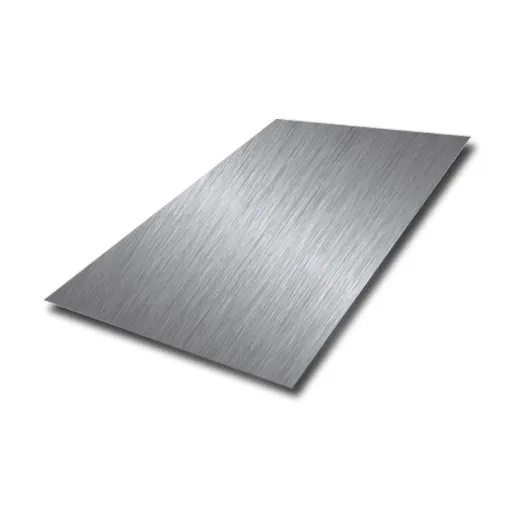The events behind mystery and wonder attracted the attention of man for centuries. Applying this to diverse fields of science and engineering needs an understanding of magnetic properties. But what about lead, a quite common and useful metal? Is it like iron or nickel that can be magnetized, or is it something else from the magnetic point of view? This article drifts into the fascinating realm of magnetic properties of lead, investigates the science behind its behavior, and answers some probably surprising questions. For any layperson or a science lover, come through for an interlude to know this somewhat surprising relationship between lead and magnetism!
Understanding Magnetic Properties of Metals

Definition of Magnetic and Non-Magnetic Metals
There are magnetic metals that experience an attraction force with a magnet and can be magnetized to become permanent magnets. Such metals usually contain iron, nickel, or cobalt, which are ferromagnetic materials. The magnetic property of a metal develops from an alignment of atomic magnetic domains producing a strong magnetic field. Iron, steel, and nickel and cobalt alloys are the very familiar examples in the category of magnetic metals.
However, for nonmagnetic metals, the attraction does not exist between astronomical field and a nonmagnetic metal, so these cannot be magnetized easily. Such metals generally lack the internal structure almost necessary for a magnetic domain alignment, making them keep uninfluenced by magnets. Examples are aluminum, copper, gold, and lead. Because of their atomic structure, they cannot support strong magnetic interactions and are, therefore, non-magnetic.
Key Point: Lead is not magnetic under usual circumstances. It is a diamagnetic material that weakly repels magnetic fields rather than attracting them. Diamagnetism is present in those materials independent of electron configuration, provided all electrons are paired so that any resulting magnetic moment is canceled out. Since lead interacts faintly with magnets, it can really be said that this effect is negligible, and without scientific instruments to measure it, unnoticeable. Hence, for a practical purpose, lead is considered to be non-magnetic.
Types of Magnetic Behavior: Diamagnetic, Paramagnetic, and Ferromagnetic
In the broadest context, any magnetic behavior can be considered to fall into one of three permutations: diamagnetic, paramagnetic, or ferromagnetic. Every form of magnetic behavior arises due to different electron and atomic configurations within the material and in effect dictates how the material behaves on a large scale when a magnetic force is applied.
Diamagnetic Behavior
These materials oppose an external magnetic field with a weak and negative susceptibility. This is due to the presence of paired electrons in atomic orbitals that generate a magnetic field contrary to the one being applied externally. Other examples include bismuth, copper, and water. This effect is universal to all substances, but due to competing stronger magnetic effects in other substances, it is usually considered negligible unless it is inherently diamagnetic.
Paramagnetic Behavior
In contrast, paramagnetic substances possess unpaired electrons that give rise to a net magnetic moment. These moments partially align with an applied field, converting into a feeble attraction toward it. However, this property holds only over a certain temperature range and vanishes with an increase in thermal energy, which can destroy any Parade alignment caused by thermal motion. Aluminum and oxygen are examples of substances exhibiting paramagnetism in presence of magnetic fields.
Ferromagnetic Behavior
Ferromagnetic materials exhibit the strongest response to external magnetic fields due to the parallel alignment of magnetic moments over large portions of areas called domains. This produces a strong magnetic effect, as displayed by iron, cobalt, and nickel. It is important to remember that these ferromagnetic materials maintain their previous state of magnetization even after removal of application of the external field, thereby supporting the concept of permanent magnets. This kind of behavior is an external trait that is affected by temperature; these materials have a critical temperature called the Curie point, upon reaching which, the ferromagnetism vanishes.
This kind of magnetism is crucial in laying the foundation of understanding of material properties and their applications in various technological fields, including data storage, electromagnetism, and electronic devices.
How Metals Interact with Magnetic Fields
Magnetic fields interact with metals to some degrees depending on atomic arrangement and electron behavior. These could, based on magnetic susceptibility and the response to applying fields, be classified into three main types-ferromagnetism, paramagnetism, and diamagnetism. Ferromagnetic metals-A-are iron, cobalt, and nickel. Unpaired electrons in these metals may align themselves with an applied external magnetic field under the influence of domain structure, so they develop a very strong and almost permanent magnetic effect. This domain alignment then forms the basis of applications in permanent magnets, electromagnetic devices, and electric motors.
Paramagnetic materials- aluminum and magnesium- undergo partial alignment of the magnetic dipoles on application of the external field, thus, causing a weak positive attraction, which disappears when the external field ceases. By contrast, diamagnetic metals-antipodal to paramagnetism-have negative susceptibility and repel under the influence of magnetic fields-as-induced currents establish their own magnetic field that negates the applied field.
Depending on external circumstances, such as the temperature or magnetic field present, the degree of interaction between metals and magnetic fields may also change. For instance, a ferromagnetic material becomes paramagnetic above the Curie temperature due to the loss of its magnetic ordering. The understanding of these laws allowed them to be exploited in many technological applications, from magnetic shielding of sensitive equipment to magnetic resonance imaging (MRI) in medical diagnostics. The continual advance in material science and applied magnetism is the outcome of ongoing efforts to grasp these interactions at a more detailed level.
Lead: A Closer Look at Its Properties

Basic Properties of Lead
Lead (Pb), with an atomic number of 82, is a dense, malleable, and corrosion-resistant post-transition metal, making it an essential material in various industrial and technological applications. Its notable physical properties include a high atomic mass of approximately 207.2 g/mol and a relatively low melting point of 327.5°C, which facilitates ease of casting and shaping. Lead possesses a face-centered cubic crystalline structure, contributing to its characteristic softness and ductility.
Chemically, lead exhibits weak metallic reactivity, readily forming lead(II) compounds, such as oxides and sulfates, under ambient conditions. Additionally, it resists oxidation in air thanks to the formation of a protective oxide layer, enhancing its durability in harsh environments. Lead’s exceptional density, at 11.34 g/cm³, makes it invaluable for radiation shielding applications, particularly in medical imaging and nuclear energy sectors.
From an electrical perspective, lead is a poor conductor, with a resistivity of approximately 208 nΩ·m at room temperature. This property limits its use in electrical applications but complements its role in certain energy storage systems, such as lead-acid batteries. Its combination of physical and chemical properties ensures lead remains a critical material across industries, with ongoing research dedicated to balancing its utility while mitigating its environmental and health risks.
Lead’s Position in the Periodic Table and Its Implications
Lead (Pb) is located in group 14 and period 6 of the periodic table, categorizing it as a post-transition metal. With an atomic number of 82, it is one of the heaviest stable elements, as all elements beyond lead in atomic number are generally radioactive. Its electron configuration, [Xe] 4f^14 5d^10 6s^2 6p^2, illustrates a filled inner shell structure with two electrons in its p orbital, which contribute to its relatively low reactivity compared to alkali or alkaline earth metals.
This positioning gives lead unique chemical properties. It exhibits a +2 oxidation state due to the inert pair effect, which is a result of its heavy atomic mass and relativistic effects stabilizing its 6s electrons. This characteristic limits lead’s tendency to form higher oxidation states observed in lighter group 14 elements, such as tin and silicon. The element’s position also aligns with its relatively high atomic density (11.34 g/cm³) and poor conductivity, which are consequences of the increasing metallic radius and atomic mass as one moves down the group.
The implications of lead’s position extend into its practical applications. For instance, its low melting point (327.5°C) and malleability are advantageous in soldering and shielding applications. Furthermore, being situated in the group that fosters semi-metallic behavior complements its use in alloys to enhance hardness and durability. However, its toxicity arises partly due to its ability to interfere with biochemical processes, as its ions mimic essential metals like calcium due to their similar ionic radii. Efforts to replace lead in industrial and consumer applications are ongoing, guided by its placement on the periodic table and its underlying chemical behavior.
Lead Diamagnetic Properties Explained
A diamagnetic material, which lead is one example of, has a very peculiar response to externally applied fields of magnetism. In the face of an external magnetic field, lead is able to produce a weak magnetic field opposite to the applied one. This kind of reaction is due to the absence of unpaired electrons in its atomic or molecular constitutions. As electrons in lead atoms always form paired states, their magnetic moments nullify one another; thus, under normal circumstances, lead is diamagnetic in character and would repell an external magnetic field. The diamagnetic susceptibility of lead is quite low, about -1.8 x 10^-5 cm³/mol, highlighting its weak interaction with magnetic fields.
Lead’s diamagnetism constitutes a critical property in diverse scientific endeavors and industrial operations. Crafted harnessing its diamagnetism, the accurate position manipulations for magnetic levitation stand critical, especially in works where non-organic materials are levitated. Furthermore, lead is employed in radiation shielding, where the concurring electromagnetic compatibility and radiation protection are required since lead is virtually an interference-free magnetic material. Because lead remains non-magnetic through varying temperatures, its application grows towards laboratory settings that require great consistency.
In the past few years, the diamagnetic characteristics of lead have hence found a continuously evolving picture with quantum-level phenomena in focus. The material sciences have perhaps enabled investigators to find out whether the impurities or alloying of lead with any other element may have an effect on its diamagnetism. Research of this nature could enhance the application of lead compounds in areas such as the study of superconductivity and magnetic fields manipulation. The simultaneous emphasis, however, remains on phasing out the environmental and health hazards posed by lead so that these applications do not run against safety and sustainability norms.
The Science Behind Lead’s Magnetic Behavior

What Does It Mean for Lead to Be Diamagnetic?
Diamagnetism is the repulsive force that a material exerts on some external applied magnetic field. It is therefore a weak, repelling kind of force. This phenomenon comes about due to the effects of changes in the orbital motion of electrons in the presence of magnetic fields, whereby the material develops magnetic moments that oppose the applied field. In lead, with its closed electronic shell configuration and no unpaired electrons, diamagnetism is intrinsic to the atomic constitution. The weak repulsion displayed by lead sets it apart from ferromagnetic or paramagnetic materials, which set up stronger, permanent interactions with magnetic fields.
The diamagnetic susceptibility of lead is important to characterize its reactions to magnetic fields. Measured in terms of magnetic susceptibility, with the symbol χ, its values are always negative in conformity with the traits of diamagnetic substances. At room temperature, the susceptibility value for lead is around -1.8 × 10⁻⁶ emu per gram per Gauss (cgs units). This fine yet notable parameter reveals how lead interacts with magnetic fields at the atomic level while such effects would usually be overshadowed by dominant magnetic properties of other components in a mixed system or an alloy.
From a practical perspective, knowing and using lead’s diamagnetic properties is of importance in modern technologies. For instance, research of the detailed response at quantum-level magnetic fields in lead is under development in fields such as superconductivity, where alloys of lead can be made to exhibit near zero electrical resistance at extremely low temperatures. Also, incorporation of diamagnetic substances such as lead in shielding applications or scientific instruments of precision intends to keep out any magnetic interference, which accompaniment in sensitive and accurate environments.
Effects of an External Magnetic Field on Lead
The response of lead to an external magnetic field is largely governed by its diamagnetic properties and quantum-level interactions. Detailed studies and experimental data highlight the following key effects:
- Induced Magnetic Moment: When exposed to an external magnetic field, lead generates a weak induced magnetic moment in the opposite direction of the field. This occurs due to changes in the orbital motion of electrons, a hallmark of diamagnetic materials.
- Magnetic Flux Exclusion (Meissner Effect): Lead exhibits the Meissner effect when it transitions into its superconducting state, repelling magnetic flux completely from its interior. This behavior is crucial in superconductivity applications and occurs below its critical temperature of approximately 7.2 K.
- Critical Magnetic Field Threshold: The superconducting state of lead is disrupted if the external magnetic field exceeds its critical magnetic field strength. For lead, this critical field is approximately 0.08 Tesla at absolute zero, decreasing with increasing temperature.
- Resistance to Magnetization: Unlike paramagnetic or ferromagnetic materials, lead resists significant magnetization. Even under strong external fields, the effect of alignment in atomic orbital contributions remains minimal.
- Shielding of Magnetic Fields: Lead’s diamagnetic nature allows it to be used in shielding environments with weak magnetic interference. This effect is particularly valuable in the construction of advanced experimental setups requiring precise control over magnetic field disturbances.
These documented effects underscore the unique interactions between lead and magnetic fields, establishing its importance in both theoretical study and practical applications of electromagnetism.
Comparison with Other Metals: Is Lead Truly Magnetic or Nonmagnetic?
Lead is nonmagnetic and exhibits diamagnetic properties, weakly repelling magnetic fields, unlike ferromagnetic metals like iron, nickel, and cobalt.
| Aspect | Lead | Iron | Nickel | Cobalt |
|---|---|---|---|---|
| Magnetism Type | Diamagnetic | Ferromagnetic | Ferromagnetic | Ferromagnetic |
| Electron Config | Paired | Unpaired | Unpaired | Unpaired |
| Field Reaction | Weak Repulsion | Strong Pull | Strong Pull | Strong Pull |
| Material Density | 11.34 g/cm³ | 7.87 g/cm³ | 8.91 g/cm³ | 8.90 g/cm³ |
| Usage | Shielding | Motors | Generators | Aerospace |
| Magnetic Value | Negative | Positive | Positive | Positive |
Applications of Lead in Magnetic Contexts

Uses of Lead in Electronics and Magnetic Shielding
Lead has a versatile usage in many electronics and magnetic shielding applications because of its unique physical and chemical properties. Below is a detailed enumeration of five uses:
- Radiation Shielding in Electronic Devices: Due to its density and high atomic number, lead finds application in shielding sensitive electronic components against harmful radiation. It is used in X-ray machines, medical imaging devices, and nuclear instrumentation to protect the devices and their operators from excessive radiation exposure.
- Electromagnetic Interference (EMI) Shielding: Lead acts as an EMI shield to keep electronic circuits safe from external electromagnetic interference. With its conductivity and malleability, it finds uses in cable sheathing, enclosures for sensitive equipment, and the diminution of interference in high-frequency systems.
- Soldering of Lead-Alloys in Circuitry: Lead-based alloys coupled with tin are solders most common in electronics. The soldering ensures a strong and durable joint for the PCB and other electronic assemblies. However, in some regions, regulations have stipulated barriers in the form of lead-free options.
- Vibration Dampening and Noise Reduction Materials: Lead-dampening mechanical vibrations and noise are useful when such services would interfere with sensitive electronic readings—for example, in laboratory-grade measurement equipment or aerospace electronics.
- Magnetic Shielding in Advanced Experimental Setups: Being diamagnetic, lead creates shields against disturbances from magnetic fields in scientific experiments. Lead linings in research facilities shield the integrity of experiments for high-precision studies, mostly in physics and material science labs.
Every one of these applications, in a way or the other, demonstrates the versatility of lead and how it is rightly suited to meet rigorous standards of electronic and magnetic shielding technologies.
Lead in Medical Applications: X-ray Shielding
Because of its high density and atomic number, lead forms a very important component in medical applications, especially in X-ray shielding. Both of these properties allow lead to block or attenuate ionizing radiations, thus protecting both the patient and the medical personnel from unnecessary exposure during diagnosis and treatment. Listed below are five applications of lead in medical X-ray shielding in detail:
- Lead Aprons: Lead aprons are widely used in radiology and dental imaging. These protective garments allow patients and healthcare workers to avoid scattered radiation and thus reduce exposure. Research suggests that a lead apron can block up to 95% of radiation exposure, depending on the thickness and composition of the material.
- Lead Glass: Lead glass is employed in observation windows of the radiology suites so that technicians can safely monitor procedures and thereby avoid exposure to harmful radiation. Usually, the glass contains 48% or more of lead oxide to ensure its effectiveness in radiation attenuation and remain transparent.
- Lead Shields and Barriers: Mobile lead shields and fixed barriers provide protection for medical personnel inside hushed areas with flexibility considered. The shields are rated to require lead equivalence, the likes of 0.5 mm of lead or 1.0 mm of lead, depending on intensity and the type of radiation in use.
- Lead-Lined Walls and Rooms: Radiology and oncology treatment rooms are lead-lined so as to confine radiation and comply with radiation safety norms. Lead panels are selected with thicknesses varying from 2 mm to 6 mm usually, depending on the nature of the facility and the legal requirements.
- Lead-Lined Storage Containers: Lead-lined containers afford the safest method of shielding radioactive substances used in nuclear medicine or radiation therapy. The containers keep and transport substances under controlled conditions, thereby minimizing risks to medical personnel and to the environment.
Through various applications, lead provides methods by which a medical facility achieves high standards of radiation protection and safety, while conforming to healthcare regulations.
Lead in Industry: How Its Magnetic Properties Affect Usage
Lead is classified as a diamagnetic material, which entails that it will exhibit a weak, negative susceptibility to the presence of an external magnetic field. This comes about by its very electron configuration: since its electrons are paired up, their magnetic moments cancel one another, rendering lead almost non-responsive to magnetic fields. In spite of this faint magnetism, lead’s properties still guide a profusion of its industrial uses. Here is a detailed account of how its diamagnetic attributes affect usage:
- Electromagnetic Shielding: Lead is employed for shielding against variable magnetic and electromagnetic fields in X-ray rooms and electrical substations. It has very faint magnetic interaction and high density, hence making it indeed suitable for blocking EMI. For example, the lead-lined walls are laid in sensitive industrial plants to shield equipment against EMI.
- Precision Instruments: With almost no magnetic effect, lead finds use in the manufacture of scientific apparatus that require great sensitivity. In certain magneticsensitive equipment, components of lead cannot be used because they introduce magnetic interference into accurate measurements.
- Superconductivity Applications: Although lead only weakly repels magnetic fields, an external magnetic field of over 0.08 Tesla is required to destroy the superconductivity of lead at temperatures close to absolute zero. At this stage, the metal gain maximum diamagnetic property–much higher than above the 7.2 Kelvin temperature, thereby henceforth becoming its transition point.
- Non-Magnetic Alloys: Lead alloys are preferentially employed in bearings and structural applications for electrical devices where non-magnetic properties are required. Lead alloys unlike ferromagnetic materials refuse magnetization thereby maintaining the status quo of any magnetic field in operation of the device.
- Corrosion-Resistant Linings: Having a corrosion-resistant lining, lead offers the advantage of chemical resistance. It is diamagnetic, hence compatible with magnetic-sensitive environments such as pipelines or tanks used to store liquids that must not be influenced by external magnetic fields.
Capitalizing on such an unusual property, lead has maintained its position as an important material in the vast industrial world, endorsing its varied usages in modern technology.
Common Misconceptions about Lead Magnetism

Can Lead Stick to a Magnet? Debunking the Myths
Lead is misunderstood when it comes to magnetic forces. Lead is a diamagnetic material: it creates a weak magnetic field in opposition to an externally applied magnetic field. The same property keeps it from being attracted to ordinary magnets or displaying strong magnetic behavior. What most people do not know is that many myths exist because of the misinterpretation of certain properties of lead or its alloys.
When one refers to the question of whether lead can “stick” to a magnet, one must bear in mind that under normal conditions, pure lead will not stick to a magnet. Any so-called response to magnetism is very slight and is due to external factors, such as impurities in the material or the presence of alloyed metals capable of being magnetized. Hence, the diamagnetic nature of lead is an extremely weak one, whereby lead barely repels magnetic fields as opposed to attracting them.
It has always been known that lead is diamagnetic. Recent investigations accept that lead remains diamagnetic even in extreme magnetic environments, resisting the effects of strong magnetic fields. This makes lead valuable where industrial processes demand the utmost control over magnetic interference, like in radiation shielding or storage of sensitive electronic components. These facts highlight the importance of separating scientific realities from common misconceptions and accurately placing lead in the scientific context.
Why People Think Lead is Magnetic
This misconception that lead is magnetic probably arises from a fundamental misunderstanding of the different types of magnetism and the responses of materials to the presence of magnetic fields. Lead being often used in applications involving metals, one could assume it exhibits the classic magnetic behavior that ferromagnetic materials such as iron or nickel might. Such a notion, however, dismisses the fact that lead is diamagnetic. Diamagnetism refers to a very weak, negative response of magnetic fields exhibited by which generate magnetic fields opposite to the applied field; so faint is that in essentially all practical scenarios.
The other factor feeding this misconception would be in the association of lead with industry and technology. The use of lead for radiation shielding, batteries, and other applications where density counts might pseudo-electromagnetically sway the layperson’s view. For instance, lead-acid batteries are poised to be one of the chief power sources for vehicles and backup power systems; in this capacity, the electrical nature of the technology stands to foster the false belief that magnetism is in some way related to lead. Such misunderstanding can be extended when the magnetic phenomenon of machinery or electronic devices is inappropriately attributed to the lead components within them.
In short, some of the most recent scientific evidence in materials science goes on to show that lead has very insignificant magnetic considerations when compared with ferromagnetic or even some paramagnetic materials. Research in diamagnetic properties tells us that lead opposes external magnetic force, thus making it interesting for application in any field requiring minimum magnetic interference-from shielding sensitive instruments to magnetically induced experimental errors, etc. Also, precise measurements of laboratory experiments have given the quantitative magnetic susceptibility values for lead, showing it to be weakly diamagnetic, with values much below those of ferromagnetic materials. Such precision in measurements goes a long way to dispelling myths, and this ensures that any application involving lead takes into account its scientifically established properties rather than some far-fetched assumptions.
Clarifying Misunderstandings Regarding Lead and Magnetism
It is mistakenly believed that lead interacts with a magnetic field in the same way as ferromagnetic materials, for instance, iron and steel; this concept does not stand. In my opinion, being diamagnetic means a lead, when exposed to a magnetic field, actually produces a weak magnetic field opposed to the applied one, instead of getting strongly attracted or retaining magnetism. This is a property diamagnetic substances share: negative magnetic susceptibility. When discussing lead’s material properties in scientific or practical applications, one should, therefore, clear up the confusion.
The reason behind lead’s weak response to any magnetic field is, in fact, its electronic configuration: the paired electrons in its atom, much like in bismuth, create opposed magnetic moments that cancel each other, giving the atom no net magnetic dipole in the presence of an external field. Lead cannot be drawn toward magnets nor exhibit anything reasonably describable by paramagnetic or ferromagnetic behavior. If the right information is placed forward, enclaves of over-simplifications and inaccuracies surrounding lead and magnetism can be removed.
The other point I want to stress is that these misconceptions often arise from a lack of concrete knowledge about materials, their properties, and classifications. We should be trying to correct such an erroneous standpoint using a technical methodology derived from factual data rather than basing assumptions. A correct interpretation of lead as diamagnetic would help industries and scientific communities alike to harness the properties of lead more effectively, benefitting the scientific application in all forms, shielding, experimentation, or any other related engineering processes.
References
- Does Magnetism Travel Through all Materials? – Physics Van: This source discusses the magnetic properties of materials, including lead, in the context of superconductivity.
- Magnetic Materials – IUPUI Physics Archive: This page categorizes materials like lead as diamagnetic, explaining their magnetic behavior.
- How to Identify a Lead Water Service Line – Louisiana Department of Health: This document mentions that magnets do not stick to lead pipes, highlighting its non-magnetic nature.
- Click here to read more.
Frequently Asked Questions (FAQ)
Q: Can lead be magnetized?
A: Typically considered a nonmagnetic element, lead can, however, become weakly magnetic under certain conditions. In the presence of a magnetic field, lead can exhibit some minor level of magnetization but does not display strong magnetism like ferromagnets.
Q: What are the magnetic properties of lead?
A: The magnetic qualities of lead are weak, implying that it does not draw magnets significantly. It is among materials that weakly oppose the exerted magnetic field, thereby not showing strong magnetic properties.
Q: How does an external magnetic field interact with lead?
A: An applied magnetic field may induce feeble and brief magnetization in lead; once the external field is removed, the lead will revert to nonmagnetic states.
Q: Is lead considered a magnetic or a nonmagnetic material?
A: A lead is primarily classed as a nonmagnetic material. Under the influence of an external magnetic field, lead can sometimes get weakly magnetized due to weak magnetic permeability.
Q: What happens when lead is mixed with ferromagnetic materials?
A: Lead could perhaps make a compound of stronger magnetic property than pure lead when mixed with ferromagnetic impurities. This means that the mixture could have a net magnetic effect.
Q: How does lead’s magnetic permeability compare to other metals?
A: Lead is less magnetically permeable in comparison to any metal possessing positive magnetic permeability. This means it does not catch magnetization well and cannot exhibit much magnetic attraction.
Q: Can lead be used in any magnetic application?
A: While lead cannot be used in most applications involving magnetism due to it being very weakly magnetized, in the special instances where its behavior in the presence of a magnetic field is studied, such as magnetic field shielding, lead still finds applications.
Q: How does lead behave when in magnetic fields?
A: Lead’s influence in magnetic fields is that of a feeble opposing magnetic field. It does not strongly attract magnetic materials, but it can respond ever-so-slightly to external magnetic influences.
Q: How is this temporary magnetism of lead achieved?
A: Lead can become temporarily magnetic when subjected to an intense external magnetic field. This temporary magnetism sets in due to the aligning effect of the magnetic field on the atomic structure of lead and dissipates as soon as the field is removed.
Key Takeaway
Lead is a diamagnetic material that weakly repels magnetic fields rather than being attracted to them. Unlike ferromagnetic materials such as iron or nickel, lead cannot be easily magnetized and is considered non-magnetic for practical purposes.







